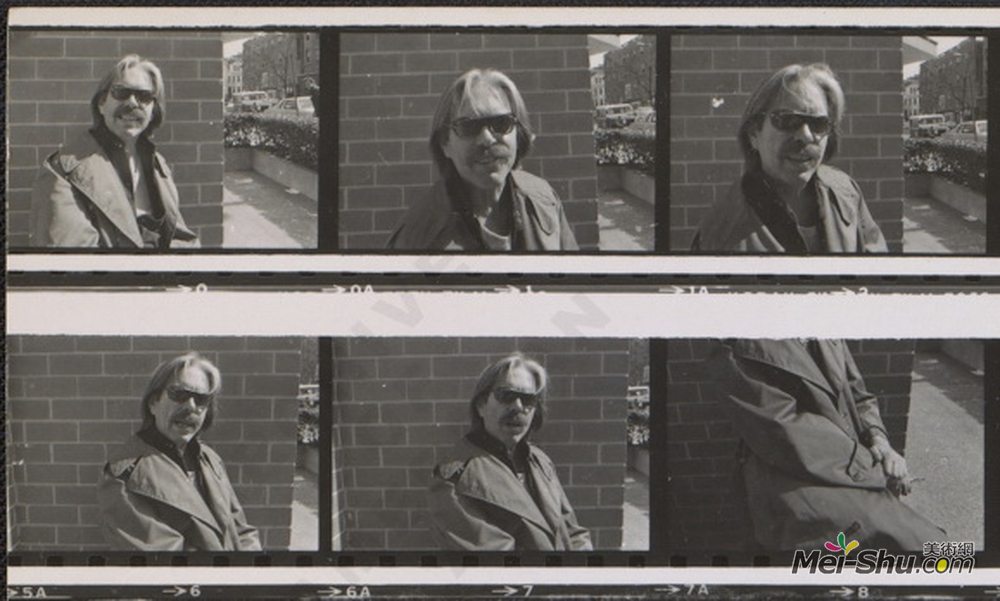
托马斯·道宁(Thomas Downing)
艺术家: 托马斯·道宁
生于: 1928;萨福克郡,Virginia,美国
卒于: 1985年10月;普罗温斯敦,马萨诸塞州,美国
国籍: 美国
流派: 画后抽象
领域: 绘画
托马斯·唐宁是美国画家,与华盛顿色彩运动有联系。
托马斯·唐宁出生于弗吉尼亚州的萨福克。他在Virginia阿什兰伦道夫麦肯学院学习,在那里他获得了1948的文学学士学位。然后,他在普拉特研究所,一个著名的艺术学校在纽约布鲁克林区,直到1950。那一年,他获得了弗吉尼亚美术馆的赠款,使他能够去欧洲旅行,在那里他曾在巴黎的朱利安美术学院学习过一段时间。
1951年他回到美国,在美国军队服役后,定居在华盛顿特区,在那里他开始了他的学业。o教,在1953。第二年夏天,他进入天主教大学的一个暑期研究所,在Kenneth Noland的指导下学习。他成为诺兰德的朋友,诺兰德对唐宁的艺术产生了重大影响,并且是华盛顿色彩场运动的创始人之一。
在20世纪50年代后期,唐宁与华盛顿色彩学院和色彩场绘画的另一位艺术家霍华德·米林合用一个工作室。惯性导航与制导。1964年,克莱门特·格林伯格(Clement Greenberg)在名为“后绘画抽象”(Post-.erlyAbstraction)的博物馆巡回展览中邀请了诺兰、米林、唐宁等人。1965年至1968年,唐宁在华盛顿的科科兰艺术与设计学院(Corcoran College of Art and Design)任教。受唐宁思想影响的艺术家,包括山姆·吉利姆。
>他的画在很大程度上是由在画布上以精确图案排列的圆圈组成的,颜色通常根据对称的思想来选择。唐宁的《现场绘画》是他最著名的作品,经常被当代艺术家达米恩·赫斯特与最近的现场绘画相比较。
在他生命的最后十年,唐宁住在马萨诸塞州的普罗芬顿市。他于1985年10月在马萨诸塞州普罗温斯敦逝世,享年57岁。在《华盛顿时报》的讣告中,他的死亡特征是神秘的。该报还提到了华盛顿色彩领域艺术家吉恩·戴维斯(Gene Davis,1920-1985)的死亡以及霍华德·梅林(Howard Mehring,1931-1978)的早期死亡。
Artist :Thomas Downing
Additional Name :Thomas Downing
Born : Suffolk, Virginia, United States
Died : Provincetown, Massachusetts, United States
Nationality :American
Art Movement :Post-Painterly Abstraction
Thomas Downing was an American painter, associated with the Washington Color Field Movement.
Thomas Downing was born in Suffolk, Virginia. He studied at Randolph-Macon College, Ashland, Virginia, where he received his Bachelor of Arts degree in 1948. He then studied at the Pratt Institute, a well-known art school in Brooklyn, New York, until 1950. That year he received a grant from the Virginia Museum of Fine Arts, enabling him to travel to Europe, where he studied briefly at the Académie Julian in Paris.
In 1951 he returned to the United States, and after serving in the U.S. Army, settled in Washington, D.C., where he began to teach, in 1953. The following summer, he enrolled in a summer institute at Catholic University, studying under Kenneth Noland. He became a friend of Noland, who became a significant influence on Downing's art and who was one of the founders of the Washington Color Field Movement.
In the late 1950s, Downing shared a studio with Howard Mehring, another artist of the Washington Color School and Color Field painting. In 1964 Clement Greenberg included Noland, Mehring, Downing and others in his traveling museum exhibition called Post-painterly Abstraction.
From 1965 to 1968, Downing taught at the Corcoran College of Art and Design in Washington, D.C. There he taught several people who in their turn became artists influenced by Downing's ideas, including Sam Gilliam.
His paintings to a large extent consisted of circles arranged in precise patterns on the canvas, with colors often chosen according to ideas of symmetry. Downing's Spot Paintings are his best known works, being often compared with the more recent spot paintings by contemporary artist Damien Hirst.
In the last ten years of his life, Downing lived in Provincetown, Massachusetts. He died in October 1985 in Provincetown, Massachusetts at the age of 57. In its obituary the Washington Times characterized his death as mysterious. The newspaper was referring to the then recent demise of Washington Color Field artist Gene Davis (1920–1985) and to the earlier death of Howard Mehring (1931–1978), as well.